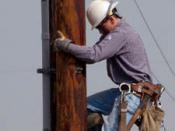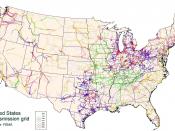Chetty and Buyya compare the emerging computational power grid and the developed electrical power grid and consider some of the issues involved in making the former as widespread as the latter. For the most part the comparison effectively highlights the similarities and differences in the questions of resources, network, system load, transmission capacity, and access interface, to name a few.
The authors rightfully conclude that their analogy enables them to identify a number of deficiencies, including lack of an operational model, stability issues, and ease of use, that must be overcome in order to implement the computational grid on the scale of the electrical grid.
Having said that, Chetty and Buyya do fail to carry to their analogy to its logical limits in one important aspect. The propagation of the electrical grid was not just a feat of technical engineering that automatically procreated itself like runaway ivy but a social phenomenon.
Other than the questions of regulation by a governing body and a standardization body, however, the authors ignored much of the human side of how actualize the grid on a grand scale. In particular, they ignore the question of accessibility, a glaring omission if one is comparing computational and electrical grids. By this I am not referring to the ability of, for example, a physically disabled individual (such as a blind persons) to interface his PC with the grid, although this is an important issue as well that the authors neglected.[1] Rather, I mean the availing of the technology to human communities, particularly those that face obstacles to joining a grid.
Recall the history of electrification in the United States. Initially, electricity was only available in cities because of the expense of transmission lines and the seasonal use by farming customers. As it was not cost-effective to bring the...


